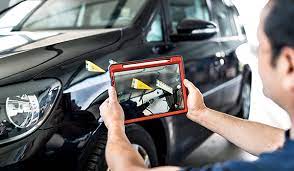Introduction
Vehicles are integral to modern society, facilitating transportation for people and goods across vast distances. They come in various forms, each designed to meet specific needs, whether for personal use, commercial transport, or specialized Car rental in Caleta de Fuste. This article explores the different types of vehicles, their components, technological advancements, environmental impacts, and the future of transportation.
Types of Vehicles
1. Personal Vehicles
Personal vehicles are primarily used for individual or family transportation. They include:
- Cars: The most common form of personal transportation, cars vary in size, design, and functionality, from compact sedans to SUVs and luxury vehicles.
- Motorcycles: Two-wheeled vehicles that offer a more agile and compact form of transport. Motorcycles are popular for both leisure and commuting.
- Bicycles: Human-powered vehicles that promote health and sustainability. They are increasingly used in urban areas for short-distance travel.
2. Commercial Vehicles
These vehicles are designed for transporting goods or providing services. They include:
- Trucks: Used for cargo transport, trucks vary in size from light-duty pickups to heavy-duty freight trucks.
- Vans: Often used for transporting goods or passengers, vans are versatile and can be adapted for various commercial purposes.
- Buses: Public transport vehicles designed to carry multiple passengers. Buses are crucial for urban commuting and intercity travel.
3. Specialized Vehicles
Certain vehicles are tailored for specific tasks, such as:
- Emergency Vehicles: Includes ambulances, fire trucks, and police cars, equipped with specialized equipment for emergency response.
- Construction Vehicles: Heavy machinery like bulldozers, excavators, and cranes, used in building and infrastructure projects.
- Agricultural Vehicles: Tractors and harvesters designed for farming operations, enhancing productivity and efficiency.
Key Components of Vehicles
Understanding the fundamental components of vehicles is essential for appreciating their functionality:
- Engine: The heart of the vehicle, converting fuel into mechanical energy. Engines can be internal combustion (gasoline or diesel) or electric (battery-powered).
- Transmission: Transfers power from the engine to the wheels. It can be manual or automatic, affecting the driving experience and fuel efficiency.
- Chassis: The vehicle’s frame, supporting its weight and housing critical components such as the suspension and drivetrain.
- Braking System: Ensures the vehicle can slow down or stop safely. This includes disc brakes, drum brakes, and modern systems like anti-lock braking (ABS).
- Suspension: Provides stability and comfort by absorbing shocks from the road, enhancing handling and ride quality.
Technological Advancements
The vehicle industry is continuously evolving, driven by technological advancements:
- Electric Vehicles (EVs): With growing concerns about climate change, electric vehicles are gaining popularity. They produce zero tailpipe emissions and often have lower operating costs.
- Autonomous Vehicles: Self-driving technology aims to enhance safety and reduce human error in driving. Companies are actively testing and developing autonomous systems.
- Connected Vehicles: Integration of internet connectivity enables features like GPS navigation, real-time traffic updates, and vehicle-to-vehicle communication, enhancing safety and convenience.
- Advanced Safety Features: Modern vehicles are equipped with systems such as adaptive cruise control, lane-keeping assist, and automatic emergency braking, improving driver and passenger safety.
Environmental Impact
The environmental impact of vehicles is significant, with concerns over air pollution, greenhouse gas emissions, and resource consumption. Key issues include:
- Emissions: Internal combustion engines release pollutants, contributing to air quality issues. Regulatory standards are evolving to reduce these emissions.
- Resource Depletion: The production of vehicles requires significant raw materials, including metals and plastics, raising concerns about sustainability.
- Urban Congestion: Increasing vehicle numbers lead to traffic congestion in cities, impacting quality of life and increasing travel times.
To combat these issues, there is a shift toward greener technologies, including electric and hybrid vehicles, as well as alternative fuels like hydrogen.
The Future of Transportation
The future of vehicles and transportation is likely to be shaped by several trends:
- Sustainability: With an increasing focus on climate change, the automotive industry is moving towards more sustainable practices, including recycling and using renewable resources.
- Shared Mobility: The rise of ride-sharing and car-sharing services is changing how people access transportation, reducing the need for individual car ownership.
- Urban Planning: Cities are adapting infrastructure to accommodate new transportation methods, including bike lanes, electric charging stations, and improved public transit systems.
Conclusion
Vehicles are a fundamental part of modern life, enabling mobility and economic activity. As technology advances and environmental concerns grow, the future of transportation will likely focus on sustainability, connectivity, and efficiency. Understanding the types, components, and impacts of vehicles can help us appreciate their role in society and the importance of ongoing innovation in the field.
